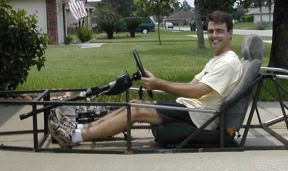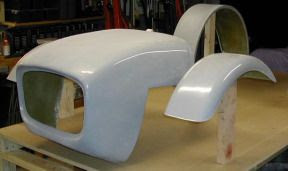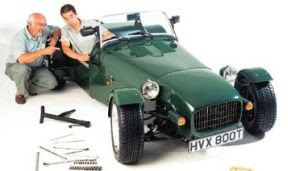Adjustable Front Suspension Design
 Thursday, April 22, 2010 at 9:29AM
Thursday, April 22, 2010 at 9:29AM Latest Updates: Front SuspensionI am often asked if I have plans for a suspension design to go with the chassis drawings on this website (such as the McSorley 442). Until now, the answer has been an apologetic, "sorry... I don't have anything to go by" and, "I don't know anything about the geometry of your donor parts (wheels, uprights, etc.)" In short, I couldn't possibly come up with every combination that someone might encounter with their particular donor parts and chassis plans.
But now there is an answer. You can build a front suspension with adjustability and then fine tune the geometry after everything is built. The approach is flexible enough to work with just about any combination of donor parts. Just follow this 3-step process, get the basic measures within about 1/4 inch, and then adjust everything to fit your needs (something I'll detail later in my build).
The track width of your rear end is where it all starts. Installing a fully adjustable upper control arm is the heart of the solution. Fine tuning the upper control arms geometry is where you will finish, probably once the car can be driven (hopefully not at the same time). The "generic" solution that I show here will work on your build too... without the need for any drawings or plans. "Shenanigans!" you might say. And to the purists, I won't argue. But what we can all agree on is that a double wishbone suspension design is a tricky business, and many builders want to build... not analyze.
Caster, camber, toe, pivot points, track width, roll-center, spring rate, wheel rate, scrub radius, KPI... Lions, Tigers, and Bears... Oh My! Having studied and thought about the front suspension design for my build over the last 8 years (on and off... mostly off), I was determined to find a simple, practical way to build the front suspension with little math, to fit nearly any donor, requiring no drawings, yet still providing a solution that will work for your build just as well as it does for mine. The approach that I came up with relies on some basic assumptions:
- the front track should be at least (if not more) than the rear, as defined by your donor rear end.
- it shouldn't matter which chassis design you're using
- it should work with almost any choice of uprights, wheels, and/or wheel offset spacers
- you are willing to spend some money for off-the-shelf parts
- off-the-shelf "thread-in" ball joints are available for your uprights (or you have access to reamer)
Let's face it... most of the geometry of your suspension is defined by your selection of donor parts. Chassis ride height is an easy measure to choose (typically about 5 inches)... and you probably have a set of wheels and tires already in mind. So, unless you modify the donor parts (or add additional parts such as wheel spacers) certain measures like track width, KPI and scrub radius are basically predetermined. So if you want to keep it simple and avoid some serious math... just follow the process that I demonstrate in my assembly journal. The latest updates start with article number 34: Preparing the Front Uprights.






